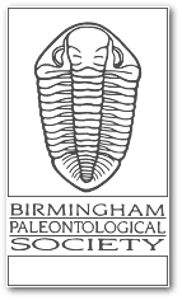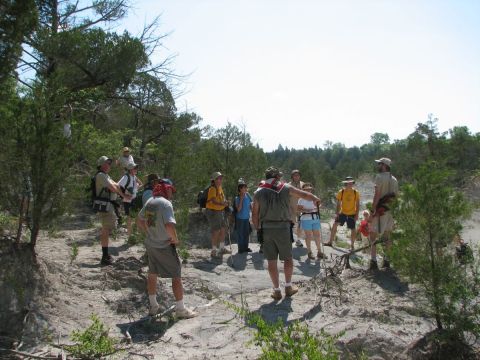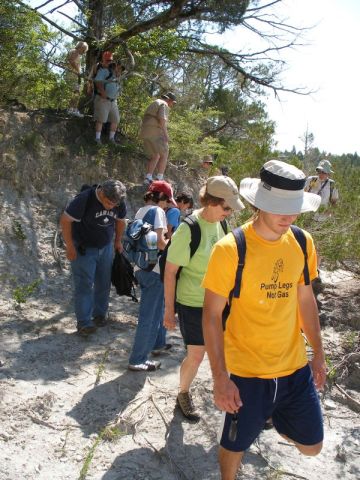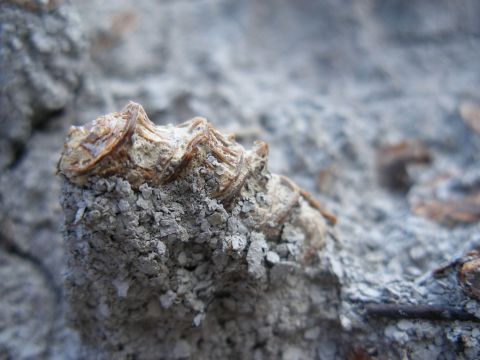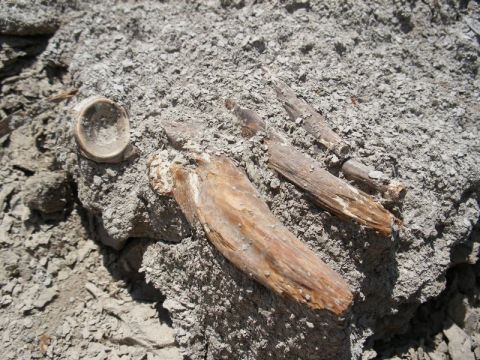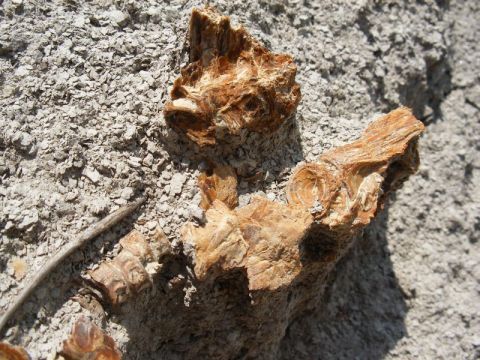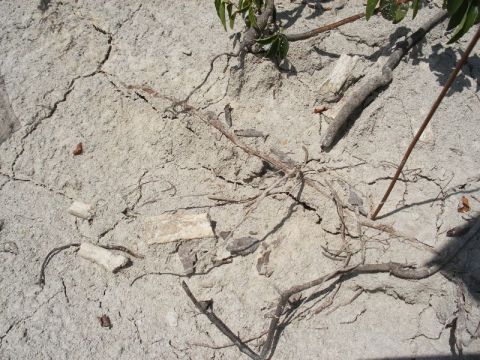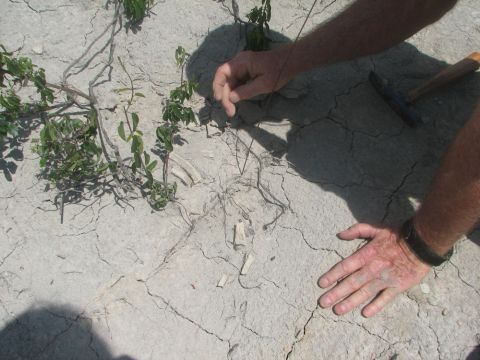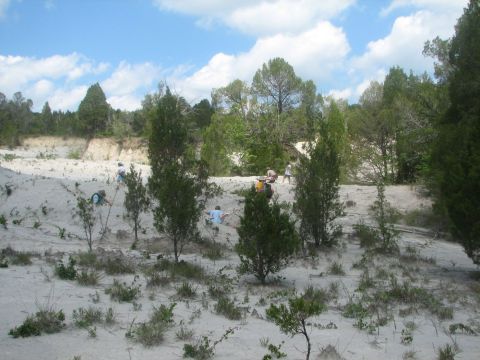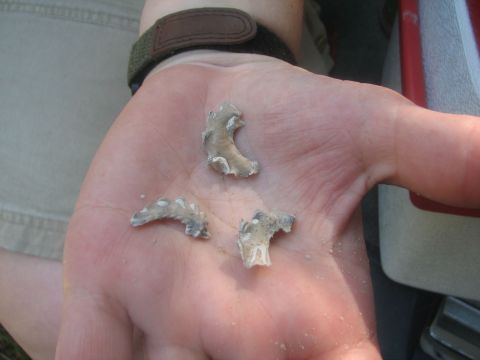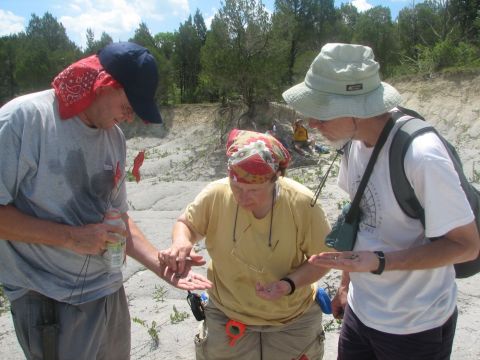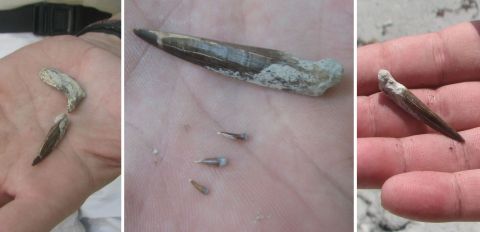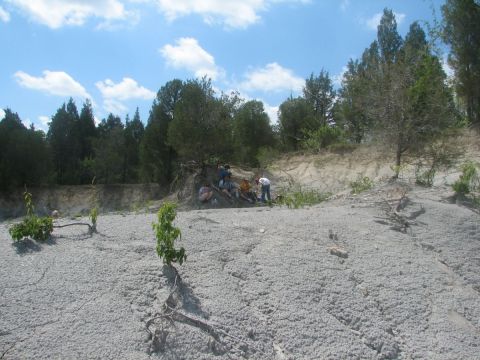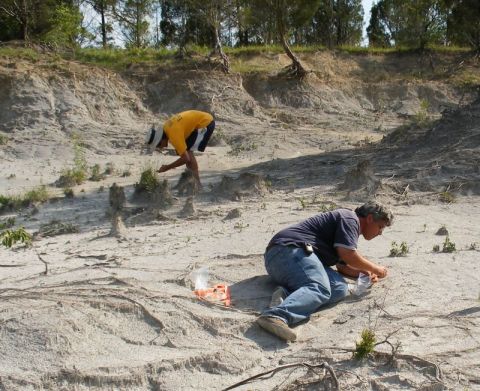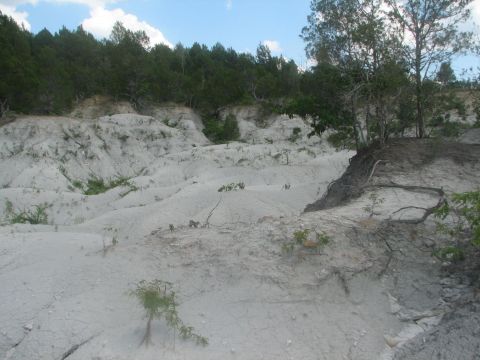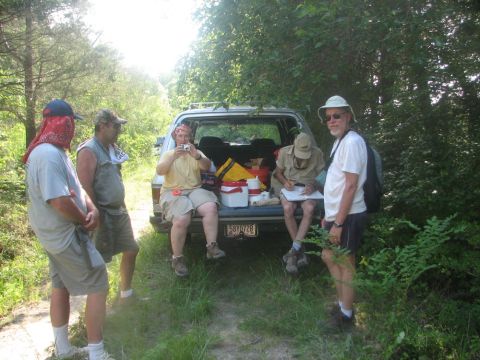May 31, 2008 - Late Cretaceous Fossils, Dallas County, AL
This Saturday in late May was HOT! A large group of 27 people met at a private site in central Alabama to search several very extensive gullies for fossils. BPS has not visited this site in at least 10 years, so we were excited about this opportunity. This gully has been a treasure-trove of fossil material over the years, most of which is currently housed at the Museum of Natural History in Tuscaloosa, Alabama. This day was no exception, and a number of important finds were made, including various mosasaur bones at several locations, including a juvenile vertebra, at least two fish skeletons, turtle bones, several partial and deformed starfish replaced with marcasite, Enchodus teeth of all sizes, a bird tooth, and another fossil bird. From the items being shown for photo documentation, it seemed that most people found at least one shark tooth, oysters, shell material, and plenty of shrimp burrows. Claire even found an echinoid.
Several people decided to brave the tall grass and poison ivy to check out a gully off the beaten path. Along with the fossils were plenty of chiggers!
Did I mention that it was HOT? James Lamb's thermometer in the middle of the gully registered 115 degrees. Coupled with the lack of vegetation, the stark white chalk of the gullies made this day almost unbearable, though we attempted to get in early to avoid the heat. When one is not accustomed to heat, hyperthermia can set in quickly, with symptoms of dizzyness, dehydration, confusion, and a feeling of exhaustion. Also, the gullies were so steep, once deciding it was time to go find a cool drink and some shade, just climbing out of the gullies was a major undertaking. A number of people decided to leave by early afternoon, or sit in the shade of the trees to cool off. One group took off to tour Old Cahawba, with a swim afterward, and Becky was headed out to North Dakota to hunt fossils for a couple of weeks. A smaller group managed to stay late; once it starts cooling off around 5pm, the late evening sunlight is often polarized, which makes it much easier to spot fossils, and collecting is very pleasant.
Photos courtesy Jan Novak and Vicki Lais
This will have to do for the group photo. Here are 18 of the members and guests on the trip. What's that you said James, lets do the group picture when we get to the gully???
Climbing down the steep gully wall to the middle of the gully where fossils are found, and of course, we're already looking for fossils!
Shark tooth, various shells, marcasite nodules
Shark teeth, enchodus tooth, mosasaur vertebra
Shark teeth, enchodus tooth and tiny mosasaur vertebra.
The gullies are extensive, and the fossils blend in with the soil, so eagle eyes are sometimes necessary.
Enchodus teeth of various sizes. A small piece of an enchodus jawbone was also found, as shown in the leftmost image. A rose bush has thorns larger than these tiny teeth in the middle!
Claire emptied out her bag to show some of the fossils she found.
James Lamb spends a few minutes on every single field trip to write down the details of the site in his log book, including who was on the trip, what was found, and other items of interest. Log books such as these are an important part of the professional paleontologist's responsibility.
